I tracked Apple’s Top 200 Podcasts for an entire year. Here’s what I found.
In early 2017, a colleague and I were discussing an upcoming podcast launch, debating which of Apple’s categories was the best fit: Business? Technology? Society & Culture? Which of Apple’s categories was most appropriate, and would give the show its best chance of being discovered?
Josh Morgan had already done some fascinating analysis of Apple’s podcast categories in 2015, where he identified the most (and least) crowded categories across Apple’s podcast ecosystem.
But we were interested in top-performing podcasts. Specifically, we wanted to know:
- Which categories are most represented in the Apple Podcasts Top 200?
- How does category representation change over time?
So I wrote a short Python script to check the Apple Podcasts US Top 200. Then I ran my script once an hour, every hour, for an entire year. Here’s the result:
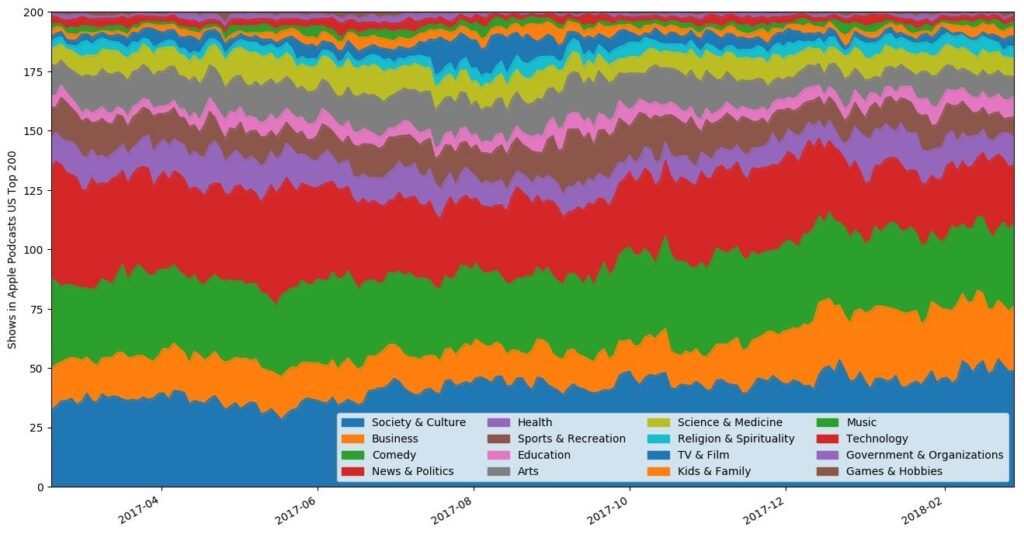
As previous analysis has found, Society & Culture is consistently the most-represented category. Comedy , Business, and News & Politics also rank highly. In recent months, these four categories together make up more than half the entire Top 200.
Stacked on top of each other, the categories don’t seem to change much over time.
But remember: the Top 200 is a zero-sum game. For one category to gain ground, another must lose. If we compare categories against each other (using a centered 30-day rolling average to smooth things out), things get more interesting:
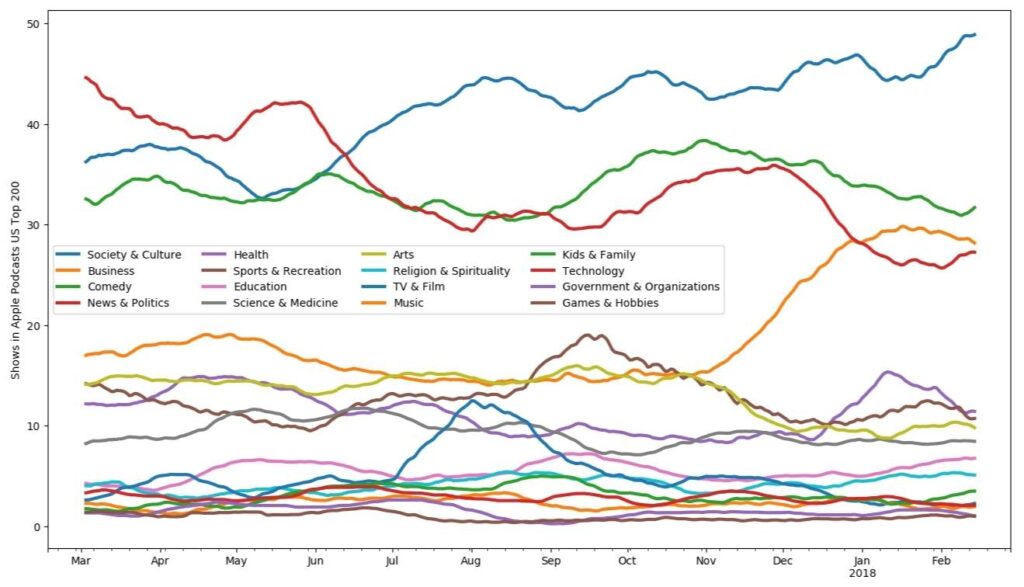
When you dive into category-by-category changes over the year, trends start to appear. Here are a few that stood out to me, and some hypotheses about what might be driving the changes:
The Business podcast boom
It’s almost like you can watch people seek out Guy Raz, Gary Vaynerchuk, and Tim Ferriss as they contemplate starting a business in the new year:
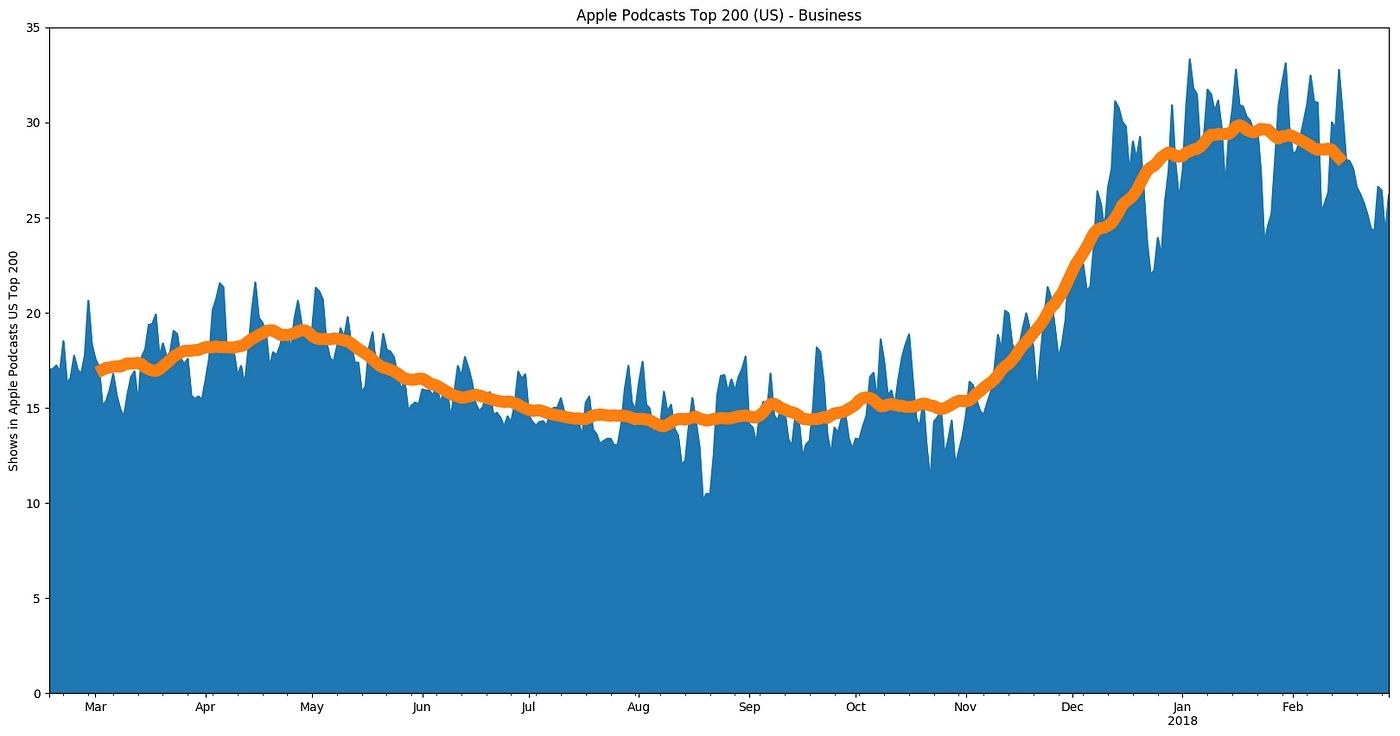
The Kauffman Index (US) doesn’t break down their new entrepreneurship stats by month, but data from a domain registrar suggests January is the month to start a business, at least in Britain:
‘Every year we see excitement about starting new businesses in January. Talking to our customers, we know that many use the holiday break from corporate life to think of exciting new business ideas and fulfil their dreams of starting out on their own,’ says Nick Leech, digital director at 123 Reg.
A summertime bump for TV & Film
The number of TV & Film entries on the Top 200 shot up dramatically over July 2017:
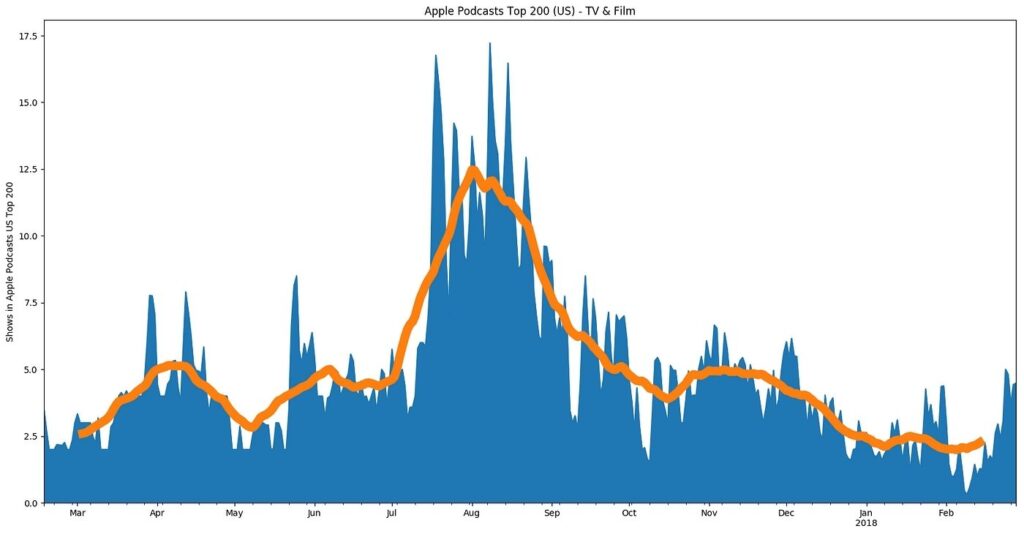
July also happens to be the biggest month for box office results. Coincidence? Probably not.
Sports
The Sports & Recreation category saw a pretty big jump in September 2017:
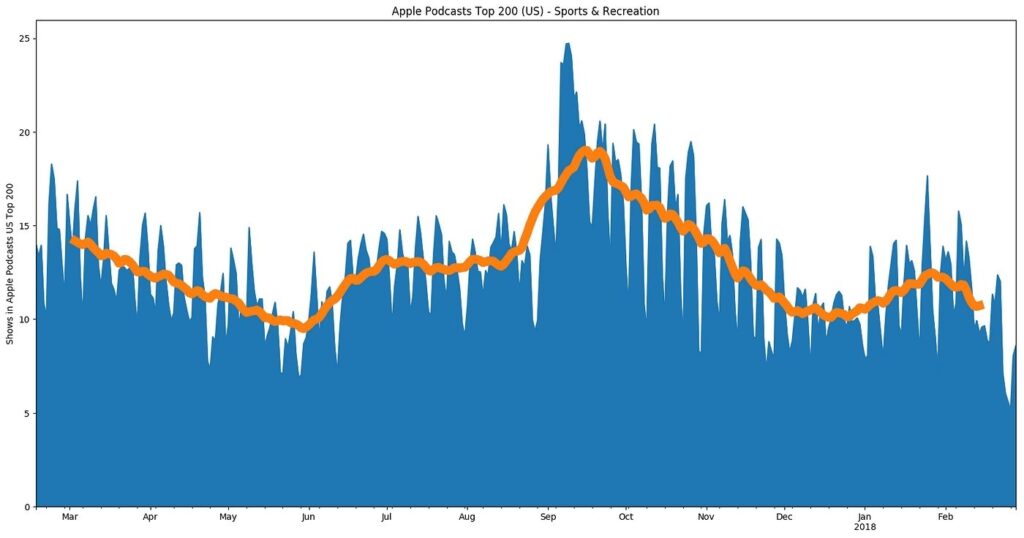
Beginning of the NFL season, perhaps?
Society & Culture is on the rise
Society & Culture is a fairly broad category. As Steven Goldstein says, it contains “everything from Dan Carlin’s Hardcore History to S-Town, Dirty John and Freakonomics Radio.”
One thing’s for sure: by early 2018, Society & Culture had steadily grown to make up nearly 25% of the Apple Podcasts Top 200:
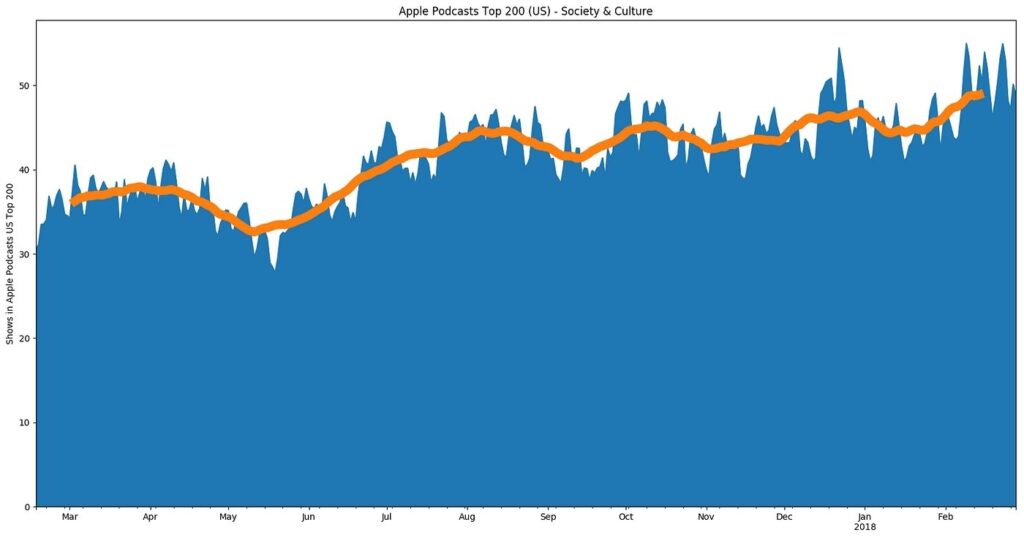
A slow decline for News & Politics
In the same way Society & Culture has slowly grown to take up more and more of the Top 200, the number of News & Politics shows has slowly declined:
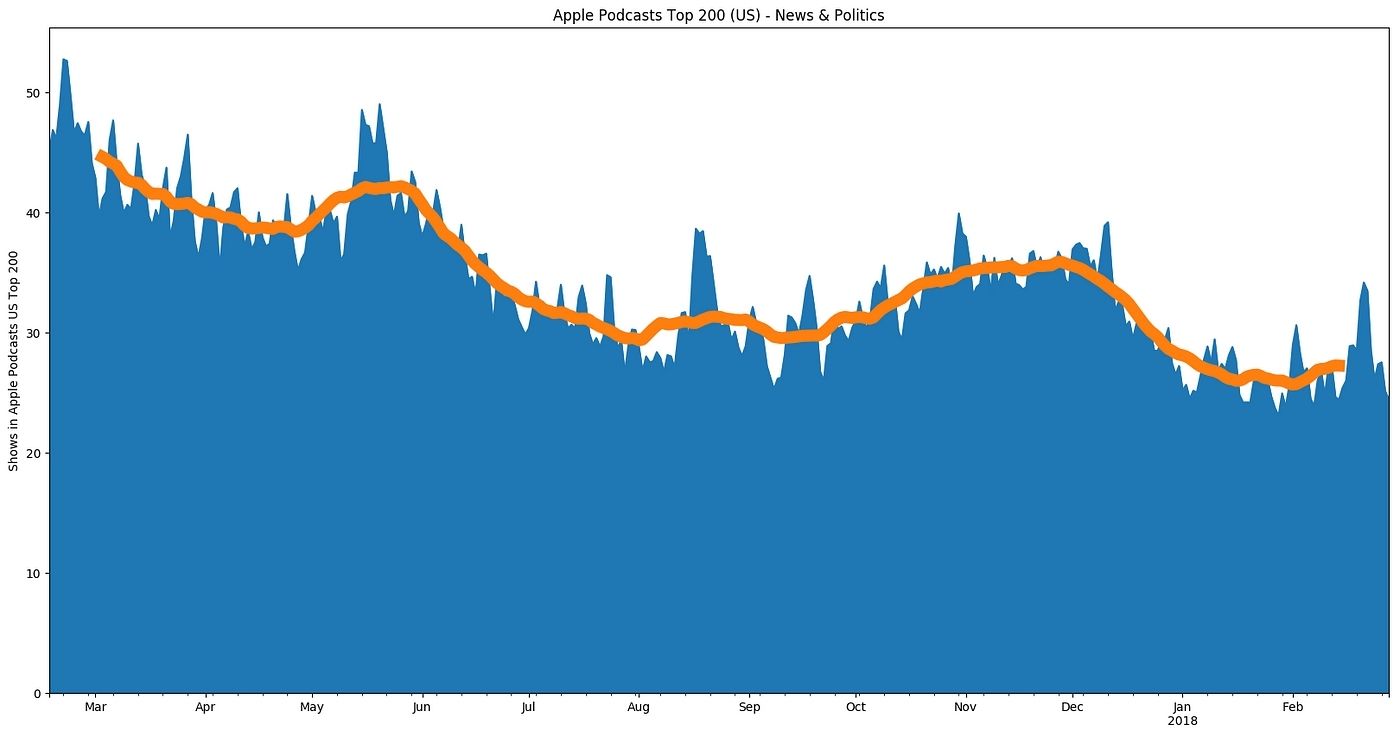
Fascinating, given the state of US politics over the past 12 months.
NB: I started tracking the charts just a few weeks after the inauguration of Donald Trump — a potential all-time high for the News & Politics category. Possible political podcast burnout since then?
Remember
Apple Podcasts has millions of weekly active users. The Apple Podcasts charts favor recency and hotness, and they reward meaningful listener engagement. At a very high level, we can use Apple’s charts to peer into the American zeitgeist.
Timing matters. Podcasts are a medium that fits into people’s lives alongside their other habits and routines.
Whether you’re launching a new show or promoting an existing show, tap into the zeitgeist. Embrace seasonality. Think about what else is going on in the world, and what else is going on in your listeners’ lives.
Then add value.
Sign up for the Pacific Content Newsletter: audio strategy, analysis, and insight in your inbox. Once a week.
